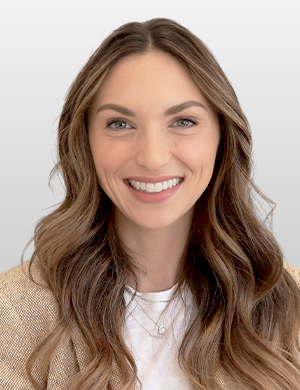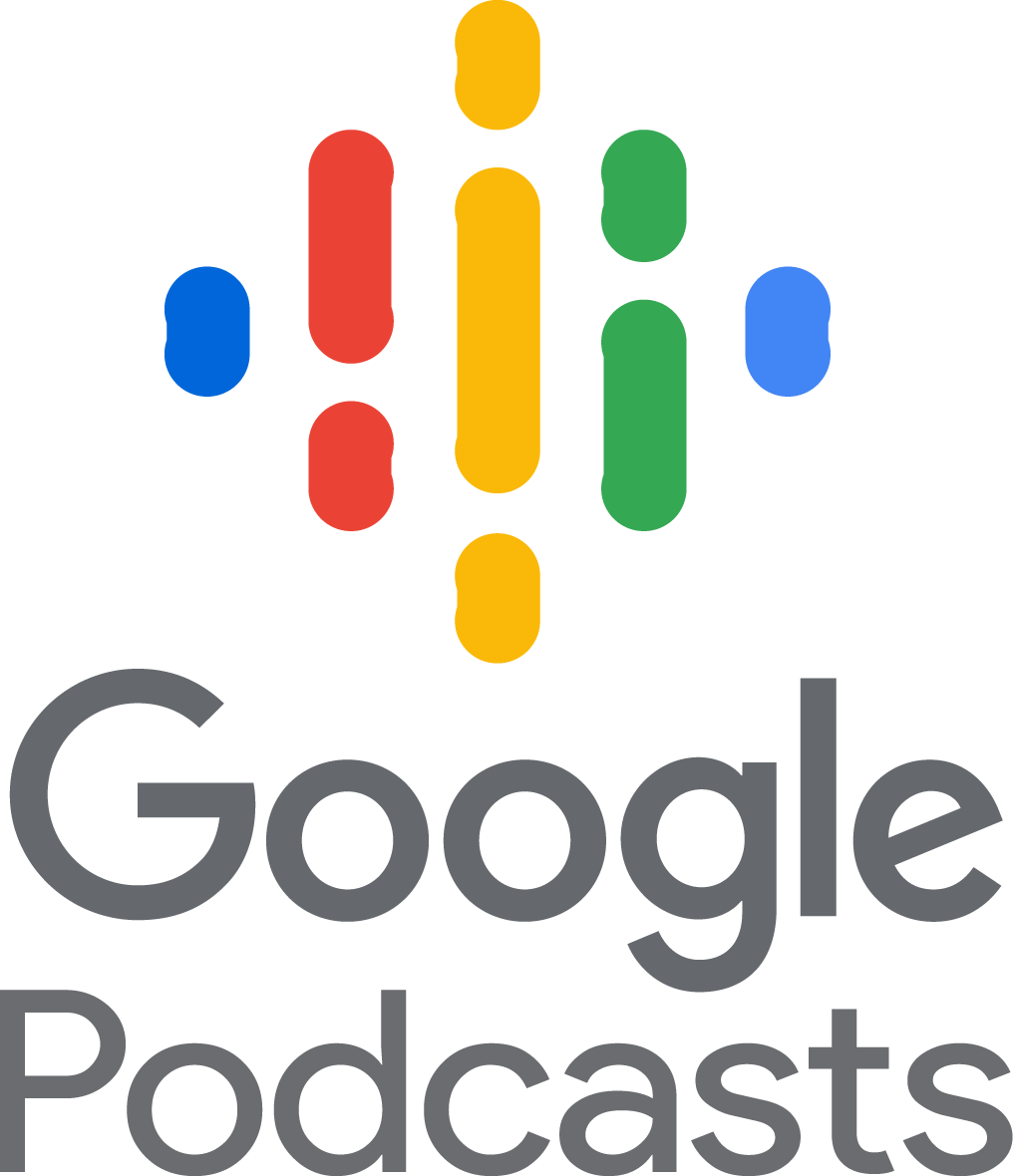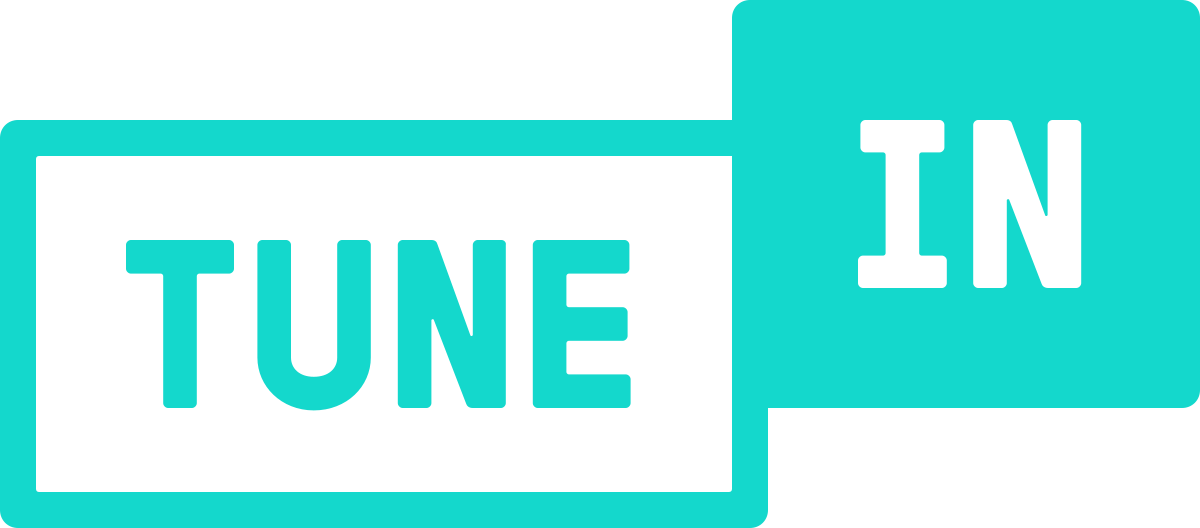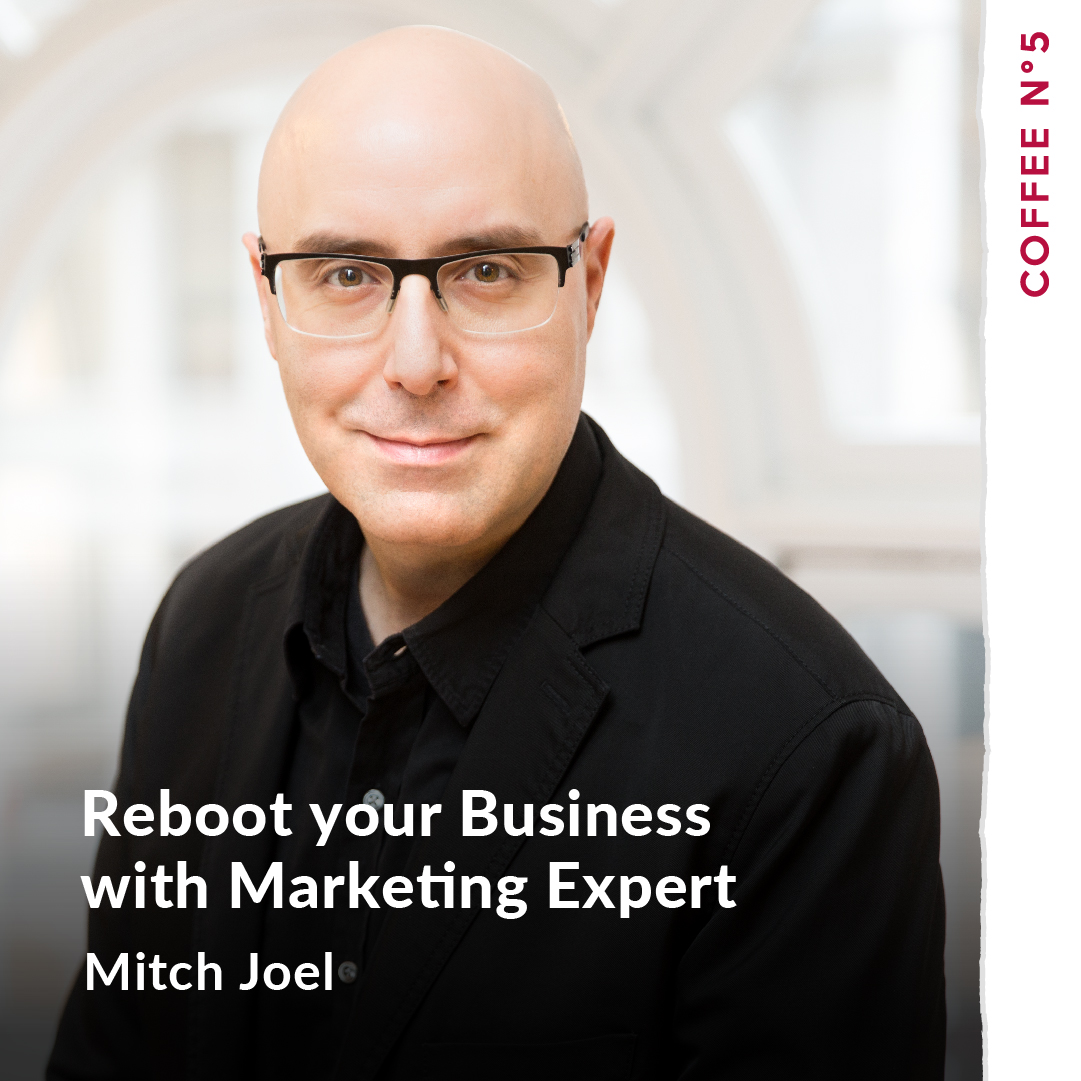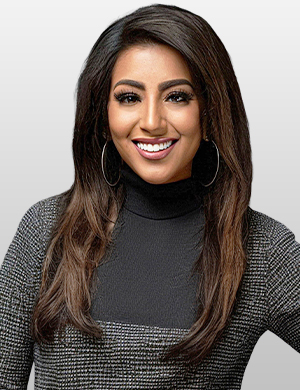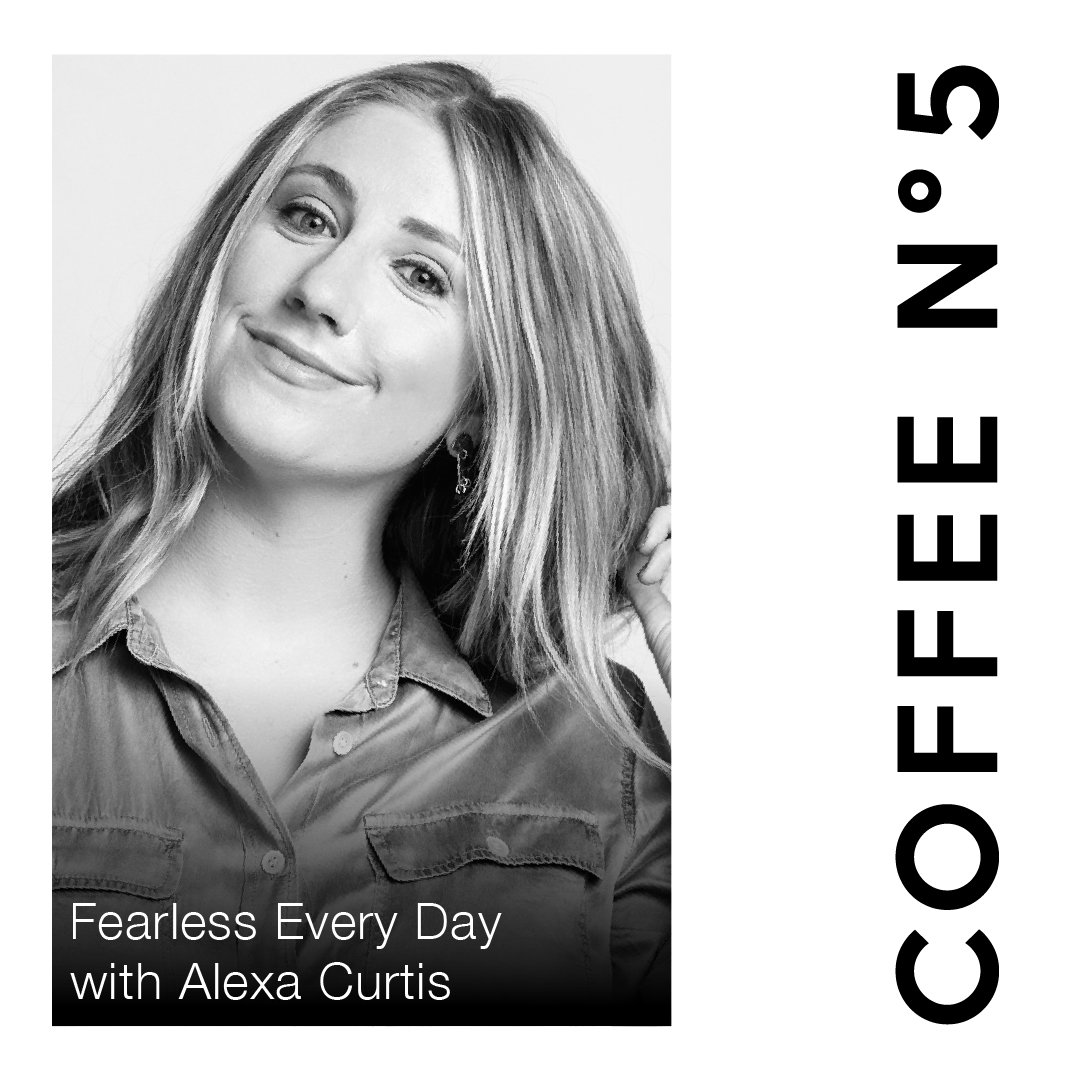Lara Schmosiman (00:11)
Hi everyone, welcome back to coffee number five. And we talk a lot of times about the unicorns. We talk a lot of times, everyone who starts a company dreams about being an unicorn and that that happened to you. And then a lot of entrepreneurs make dreams and doesn’t happen and you need to fall and then try again because I’m a firm believer I’ve never given up.
Today I want to bring you a story that is one of those unicorns. I mean, I’m sure there was a lot of work behind the scenes and a lot of nights not sleeping and worrying. And I know that it’s not that simple. So I think it’s important to share those stories too of success and how we got there. So we know that I love to work in building wellness and I…
Want to bring you a story today that it goes a little bit in both. So welcome Courtney. Thank you so much for being here for you that you might know who Courtney is. She is a co-founder of Sugar and Bronze. So what’s Sugar, welcome first and tell us what’s Sugar and Bronze and why do you come up with the idea? I want to hear a little more about your journey because you had a job back then when you came up with the
Courtney Claghorn (01:28)
Yeah. Well, thank you for having me.
really excited to be here. Sugared and bronzed for anyone who doesn’t know is basically two beauty services. It’s all natural sugaring, which is a form of hair removal. It’s removing hair in the natural direction of the growth instead of against it. So it’s a lot less abrasive. A lot of people find it less painful. It’s actually an ancient Egyptian technique. So that’s the sugaring portion. And then the bronzing portion is a rush tanning. So it’s all done by hand. It’s done by a technician. It’s not a booth or a machine.
Lara Schmosiman (01:51)
What?
Courtney Claghorn (01:58)
And so it just has the most natural results. And obviously it’s much, much safer than being in the sun or in a tanning bed. doesn’t even compare. It’s recommended by dermatologists everywhere.
Lara Schmosiman (02:08)
Okay, so how do you come up with this idea? And how was your life back then?
Courtney Claghorn (02:11)
Yeah, so this is
Well, I was 23 when the business started, so like two years ago. No, I’m kidding. Almost 15 years ago, which is so crazy. ⁓ But hopefully my botox says otherwise. ⁓ But I was getting spray tans in Los Angeles and I was right out of school. So this was probably like a year out of college and it was…
Lara Schmosiman (02:19)
Yeah.
Courtney Claghorn (02:36)
2010 at this point, so the economy wasn’t great. I didn’t love my job, but I also needed to make money and there weren’t a lot of other jobs available. But I was also very much like a broke recent college grad. Even though I had a job at a fintech company, I didn’t have any money saved when I had graduated college. I was fortunate enough not to graduate with debt, but I needed to pay all my insurance for the first time or my cell phone bills and all these things.
The idea that these spray tans in Santa Monica were $75, $115, or I had to go to a machine that did it and it was not the results I was looking for, I didn’t like the options that were available. Or one time I went to a tanning bed place where they did it by hand and it was a very straight man that wanted to spray me. I’m like most women, I like to get sprayed naked. was like, this is awkward. There were posters in the window and neon lights and I was like…
This is the only somewhat affordable, like airbrushed hand I could find. It just felt like there was a hole in the marketplace. So I started basically complaining to my then boyfriend, now husband, and also co-founder about this sort of problem I had. And one thing led to another. And it was like, what if we could start this? And ⁓ I took a lot of convincing, but we ended up figuring out that we could sort of launch it out of our apartment for about $1,000 of startup capital. But I really thought long and
that. I was like, I just saved my first $1,000. That’s crazy. Sam, my husband, was like, what if we each put in $500? I’ll have some skin and again, I’ll build a website, things like that. I was like, okay, if I have a partner, feels a little bit better. We did it. We launched it. We started it out of our apartment.
Lara Schmosiman (04:17)
And so you
were the ones spray toning people, basically.
Courtney Claghorn (04:20)
Yeah,
I was in the apartment for like the first, we were there for probably about six months in the apartment before the first door opened. And then I spread in the first location probably at least another nine to 12 months after that. So yeah, I was in it. Yeah, very in it.
Lara Schmosiman (04:35)
Very cool. because this is a journey and when I said about the unicorn, you are in unicorn, but you it’s been 15 years and how was the transition for you to start from working from home and say, well, now I’m ready to go and put the store and then I’m ready to open another store and another store you’re everywhere now. So how was your transition of growth? Because a lot of people you have to ask for money. ⁓
Courtney Claghorn (04:55)
Mm-hmm.
Lara Schmosiman (05:02)
How do you do the financing? How did you figure out also who was your team at the time? Because you started just this, you say your husband did the website, you were spray tanning. Then realize when, because this is one thing that I see a lot of founders that they are really having hard time letting go.
Courtney Claghorn (05:04)
Yeah, I mean it was
it was definitely a progression of things I mean so
When we launched it out of the apartment, I kept my job in FinTech and my husband kept his job for probably three to four years. It didn’t make sense and it couldn’t support us both financially. So, you know, it was very much me trying to figure out, you know, everything. ⁓ And I left my job probably three months in. I was like, I was turning down clients to be at work. And I was like, well, this is silly. For a new business, you should never be turning down clients. So I kind of had to make that tough decision of like, am I leaving my job?
Lara Schmosiman (05:50)
So.
Courtney Claghorn (05:54)
Let’s say we start this business, November 1st, 2010. By the end of January 2011, I leave my job. At that point, it was like, okay, we need to get this out of the apartment because this is not meant to be in an apartment forever. It was just sort of a test run. So we start looking for our first real brick and mortar store. We find a location on Montana Ave in Santa Monica, where I lived and worked in Santa Monica, so was really where I wanted to be. That being said, it was upstairs behind a tree because Montana Ave has expensive rents, but
I really wanted to be on that street. And so I was like, ⁓ people could find us in the apartment. They can probably find us upstairs behind a tree. So that’s what we ended up doing. our Santa Monica location is still on that street. It’s been relocated to a ground floor, much larger space, several years ago. But I still really stand by that real estate decision. So then we sort of do a very minimal build out on our first space and we open that first door at Memorial Day 2011.
And I’m still in there, spray tanning, doing all the things. And I think probably a year or so after that, we had a couple of family members a year and two years in want to open loose family franchises. And we didn’t know what we were doing. We kind of just said, yes, we didn’t collect a franchise fee. Everything that we had ⁓ created from our store, we just kept reinvesting every dollar. So we still had not even thought about any outside funding. And then from there, we started to open more of our
stores and again, just reinvesting every dollar. I started to manage the stores and manage the construction. And at some point it made sense for my husband then to leave his job as we really started to keep opening stores and we really needed more on the backend team. But for a long time, it was largely me and then I’d kind of pick my husband’s brains at nights and weekends maybe if he wasn’t too tired from his own job. And then he kind of came on full time like three or four years after that.
And then we continued to open stores and bootstrap. We bootstrapped for nine years without any outside funding except for a couple of SBA loans. And then ⁓ we raised money for the first time when we had 10 stores in late 2019. But at that point, the Luce Family franchises had been wrapped into the corporate structure and we didn’t have any sort of like disjointment like that.
Lara Schmosiman (08:03)
So how do you go about creating a corporate structure and then how do you go about fundraising?
Courtney Claghorn (08:09)
Yeah, I mean, it’s so funny. It all felt very, I don’t know, organic in the early days because again, it was like me, my then boyfriend. Then we had these two family members who sort of came on board and sort of had quote unquote corporate roles, but we were all just working from home. We were visiting locations. We were visiting construction sites. It was a very informal sort of corporate team. I think as the years went on, we hired a couple of people both internally and externally to ⁓
oversee customer service, oversee recruiting. Just as we grew, we needed more help, but it wasn’t a very formalized corporate team by any means. We didn’t have a formal corporate office or anything like that. Then when we raised money in late 2019, we had sort of contemplated the topic for many years of like, do we want to sell some of our equity and take on a partner? Because it’s such a big decision. Ultimately, we did decide at 10 stores that we wanted to grow pretty quickly and that we needed to raise capital.
So we were lucky enough to work with an amazing investment bank. At the time it was Piper Jackery, now it’s called Piper Sandler. And their team was amazing. They just sort of held our hand through the process, did, my gosh, so much analytics data, like all these things that the private equity firms could then look at without us basically having to quit our day jobs to put that all together. And we ended up doing 12 management meetings with different PE firms and all 12 of them
were interested and put in an LOI. And so we sort of just took it from there and ended up deciding to work with Maine Post Partners out of San Francisco. And also Howard Schultz is an investor as well, the founder of Starbucks. ⁓
Lara Schmosiman (09:43)
Very cool. So
people talk about location, location, location, and how important it is. You mentioned it as well. So how did you decide about, we heard the story about the Montana Avenue, but the other locations, how did you go there and how it was to your plan of expansion?
Courtney Claghorn (09:48)
Mm.
Mm-hmm.
Yeah, I mean, so the ones in Los Angeles were a bit easier than a lot of the others, just given that we lived in Los Angeles and we had such a deep understanding of the city. Like I’m a big intuition person and you can look at data all you want, but if your intuition doesn’t match up with it, it probably doesn’t make sense. And so just knowing the city and knowing what our clients need was a big factor. Like I know it’s a 20 minute appointment for most people if you’re getting a Brazilian or a spray tan and you want parking to be easy. So in Los Angeles, that’s a big factor.
We want safety. Our locations are open late. We have all female employees. We have 95 % female clients. So we want it to feel safe. But we also don’t need to be on Rodeo Drive because you’re kind of walking out without a bra on a lot of times and something loose and you just got a spray tan. You’re not looking to walk by Chanel, but you want a very still a high-end street, just not like extremely bougie. So we knew a lot of these neighborhoods in pockets. And so those, we didn’t have access to things like Buxton or…
these things that we have now, these demographic tools. So a lot of that was just sort of led by what we knew in the city. As we expanded beyond, thankfully, one of our earlier new markets was New York City. And I don’t know if I thought so deeply about where to be in the city. I kind of just had a feeling that if we could make it in the city, we could make it anywhere. And it was really about where we could afford rent. And again, deep intuition.
And to this day, our Union Square store that we opened, our first store there, you know, is just, it’s such a beast. It’s on an avenue, which in retrospect was such a great decision over being on a street in New York, because avenues just have so much more drive-by and walk-by traffic. And again, it was just such an intuitive decision. But now I look at all the things, why that, you know, it made that decision so great. And I’m like, I…
There’s so many factors, but I don’t know if I thought through all of them. For me, was like, I walked in, I was like, know this space will work and I know we can afford it.
Lara Schmosiman (11:57)
I feel the same way in my house. The day
that I came in to see my house, this is the house. Even it was a bit dark at the time. You just feel it. I feel like the energy calls you. So later on…
Courtney Claghorn (12:03)
Mm-hmm. Yeah.
Yeah, exactly. Yeah. So, and now
it’s different. Now we use Buxton and all these demographic tools as we go into new cities. And I go out and visit the sites and there’s a lot more cooks in the kitchen to making the decision, which makes it sort of harder and easier at the same time.
Lara Schmosiman (12:22)
Yeah,
how do you feel about that? That now you’re not the only decision maker in your business.
Courtney Claghorn (12:28)
Well, I love control, so I don’t always like that. ⁓ Sometimes it’s a relief, honestly. I think for so long we felt like, God, are we making the right decision? We never know what we’re doing. And we still feel like that a lot. We were just figuring it out every day. But it is nice to have more people to sort of bounce ideas off of, you know, because there was a lot of times, I think up until when we raised money, honestly.
We were like, we think we have a business that’s great. You know, on paper, we think it looks good, but like, does anyone else agree with us? We didn’t really know until we went into that formal fundraise and did our horse and pony show and got all this interest from all these PE firms. Then we were like, wow, like what we’re doing is actually working. Because for a while, it’s kind of easy to second guess yourself. You’re like, I started this out of my apartment. Is this a real thing? Like, does anyone else value this?
Lara Schmosiman (13:12)
When did you start? Because this is other thing I see in lot of founders that they don’t pay themselves.
Courtney Claghorn (13:17)
Yeah, we didn’t pay ourselves very much for a long time. ⁓ I think I started to pay myself when I left my job, just enough for me to pay my own personal rent and things like that. Fortunately, being 23, our lifestyles were very different. We didn’t have a child. Most of our friends were down to go to just a dive bar. We weren’t going out to fancy dinners. Life at that age is just different. So we were really lucky in that aspect. But yeah, we didn’t pay ourselves for a very long time. I think when we went to Europe,
When I say didn’t, we paid ourselves a salary, but it was low. When we went to Europe on vacation, we were using our Amex points. We were figuring out ways to live life and have fun. But yeah, we were bootstrapping. For us, it was all about growth and EBITDA. We just paid ourselves what we could get by on. I don’t think it was until, I don’t know, eight, nine, 10 stores that we really started to take home a paycheck that felt comparable to what any of our friends were making at the time.
Lara Schmosiman (14:13)
So, and then I see that you created your product line. Why you think that you went from being a service provider basically to sell products and how was the transition because I know how hard it is to create products.
Courtney Claghorn (14:28)
Mm-hmm. Mm-hmm. Yeah. It’s such a… It feels like a whole new venture for me. I’m still learning so much. it kind of was one of those things where early on, you know, we have recommendations for both tanning and sugaring of what you should do at home, both to prepare and to maintain your services. And oddly, they’re very similar. You know, it’s exfoliating, it’s moisturizing. With sunless tanning, obviously, there’s the added element of these sunless tanning products that can help extend the life of your tan, which is a little different than sugaring. But so many things are similar.
And so it felt weird with clients coming in being like, what moisturizer should I use or what sunscreen or what this and that. we’re like, you can go buy this is a Target or Amazon. Like it felt like we should just have it here at our stores. But also we didn’t want to take our eye off the ball. You know, like I kind of refer to our history as like you’re in bootstrapping mode. We go to raise money and we’re like, we’re going to open a bunch more stores and expand our product line. But then we went into pandemic mode and then we were in recovery mode. And it was a long time until we were actually
able to get back into growth mode. So like we were always hyper focused on the core business and taking our eye off the ball to start a product line wasn’t really in the cards, but we wanted to have a product offering. So for a very long time, we had private label products and just a handful, nothing super serious, just something where it was a product that we stood by, you know, that we could say, if you’re looking for X, Y, and Z to support your service, you can buy it here. You know, it’s right in our lobby. But we always really wanted to have our own formulations, our own
you know, our own custom packaging, all these things. So that really started only a few years ago. It only started once we felt like we had really recovered from the pandemic and we were able to then say, we can focus on opening 12 stores a year, not compromise the client experience, and also focus on creating a product line without, you know, any, without feeling like we were pulling resources from something else and not giving something our all. So.
That was really a newer venture a few years ago and we’re still, you know, every time new research comes out, we reformulate. Like we’re always looking to go the cleanest route, the safest route. You know, when a lot of the microplastic information started to come out, we were unaware of that. Now we’re like in a transition to all glass bottles. We’re like, how can we always constantly improve not only our brick and mortar stores, but our product line too.
Lara Schmosiman (16:40)
That’s amazing and super important. ⁓ But let’s start talking. Let’s move the conversation a little bit. One of my favorite topics that it’s marketing. talking about marketing, how was the evolution of your brand and the marketing? Because I see that today you have memberships. Did you start with membership? When is the right time to include memberships? When is the right time to offer a sale? I realize that you have a promotion offer that people can
Courtney Claghorn (16:58)
Mm-hmm.
Lara Schmosiman (17:10)
come and get their first stand for a little money. how did was your who tell you to do that? Those were your initiatives you were trying you did it. What marketing strategies work for you to create brand awareness?
Courtney Claghorn (17:23)
Yeah, I mean, so from early on, we always offered a referral discount, like $10 off, and we still do because it’s just such a huge driver of new clients and we’re always wanting to thank people for referring someone to us. So that was just, I don’t know, yeah, and I think my favorite yoga studio did it I was like, we should do that too. I love when I get credit for referring my friends to my yoga studio. So a lot of these were just kind of born organically. ⁓
We did BOGO for a long time where new clients got buy one, got the second one free. And we did that for a really long time and it was great. But as we started to grow, we just realized our wait lists were too long and we weren’t really able to offer that all the time. But we still wanted to incentivize new clients coming in. So depending on the market and the time of year, sometimes we will offer a new client incentive. I’m going to be honest with you, if it’s July in Los Angeles,
and you’re a new client, you’re probably not going to be able to find any sort of promotion to come in because it’s just our peak season, our books are so busy, doesn’t make sense.
Lara Schmosiman (18:24)
No, and this
is great because you understand your marketing cycle. Not every month for every ⁓ space is the same.
Courtney Claghorn (18:28)
Mm-hmm. Mm-hmm.
Right, right, totally. And if we open in a new market, especially maybe in the winter, you will be able to find on Facebook, Instagram, these things, these ads, and TikTok will get served to you offering $10 off or $20 off your first service, just depending on what our books look like. So if our books are really full, it doesn’t make sense to offer a huge discount. But if we’re in a new market, and certainly in the off-peak season, which is often the dead of winter unless maybe you’re in South Florida,
you know, it does make sense to offer something. And to answer your question about memberships, we didn’t start with memberships. It’s not really something I thought about in terms of our business. And then it was actually Sam, my co-founder and husband that brought it up many years ago and probably nine years ago it’s been. And he was like, what about memberships? And I was so worried about launching it from a customer service perspective because we have
often had wait lists in peak times, in times where we’re just, you we always say we’d rather be understaffed than hire people that we don’t love. And so often we have wait lists. And I was like, what if these members can’t get in and they’ve already paid for the month and we don’t have an appointment available? And he’s like, let’s cross that bridge when we come to it. it ended up, memberships have been one of the best decisions we’ve ever made. I think 60 % of our revenue comes from memberships. People use them truly, very much not like a gym.
Lara Schmosiman (19:51)
Your
incentivate loyalty by having a member.
Courtney Claghorn (19:55)
Yeah, we give a very steep discount. A membership for the single membership is $49 a month and an a la carte service is $69. I have to tell you, when we opened our very first store in early 2011, we upped our prices by a couple dollars since we moved out of the apartment. An express tan was $49. So you essentially can be a member and get a tan every month for the same price that it was 15 years ago. That is huge to us. We want to reward people for their loyalty.
Lara Schmosiman (20:17)
Thanks.
Courtney Claghorn (20:22)
by keeping prices as low as possible. And we really do, we really feel like it’s a win-win for both of us.
Lara Schmosiman (20:29)
This is so interesting, something you mentioned before, because you’re still a service provider. And customer service, it’s something so important that we, when you are a service provider, how do you handle customer service? Because it’s very different customer service when you send just a product that you go to a store, here’s your product, you like the product, you don’t like the product. There’s so many more things involved in services. How do you handle that aspect having so many stores?
Courtney Claghorn (20:34)
Mm-hmm.
Mm-hmm.
You know, we have a really great Director of Client Experience and team that supports her. It’s still a small but mighty team. And we’ve always said, you know, we want to have fantastic customer service. Like early days, you know, everyone would always talk about Nordstrom, like how amazing the customer service was there. And I was like, we want to have Nordstrom-like customer service. Like that was always a standard to us. And it’s so funny that we always talked about that because now our COO has been with us for a few years, came from 13 and a half years at Nordstrom.
And he really understands that. And so it’s just always been a pillar of our business of like going above and beyond for a client, because there are a lot of situations, quite honestly, that are a little in the gray area. Like it’s not easy, but it’s also not impossible to mess up your own tan. And it’s very clear as a service provider, if we’ve made the mistake or you’ve made the mistake, but let me tell you, a client is never going to tell you it’s their mistake. They’re never going to say, you know, all this happened or I spilled it myself.
They’re always going be like, yeah, no, I followed all the rules. And so we have to tread lightly on things like that because we don’t want to shame anyone for messing up their own tan. There are a few rules you’re supposed to follow, especially until your first shower. So we really have to make sure we’re approaching that with the right language. And still, if they feel like we’ve done them wrong, to try to make amends. even if perhaps it was their mistake, which is just part of the business.
Lara Schmosiman (22:19)
So
you just mentioned that you have a new COO, you have a director of customer service. So how was your team ⁓ growing? Because at the beginning, I assume it was you, and then you hired someone that was just doing tanning and you were supervising. I always tell every founder that I talk to is the most important thing is to have a trusted team that you can…
Courtney Claghorn (22:32)
Mmm.
Mm-hmm. Mm-hmm.
Mm-hmm.
Lara Schmosiman (22:44)
Trust is not about only delegating, it’s someone who’s going to take responsibility from that role. Hell, I’m a founder and I have my team and I know how hard it is to let go and to let… because I’m a control freak too, and to let them do their own work and just to step back.
Courtney Claghorn (23:00)
Mm-hmm.
⁓ Yeah, it’s challenging, but when you grow, you really have no choice. It’s like, can’t have my hands in everything anymore. And so was like, the only option is to let go and trust sometimes. And then sometimes you trust too much and you regret it. You have to take the reins back, but it’s always sort of that dance. so once we had a handful of people on our corporate team by the time we raised money, but when we raised capital, we went to make a handful of hires.
in planning on growing, we didn’t obviously know a pandemic was coming. And then it was sort of like we were always kind of hiring and trying to build up that infrastructure even as the pandemic was happening because we kept expecting it to be over and we kept wanting to just put the pedal to the metal and put all that capital to work. ⁓ And so there were, you know, times where we made mistakes. We made some hires early on, I think, after we initially raised money, where we just felt like the pressure to like get through the pandemic and grow. And, you know, these were people from
sexy brands that had more experience than us. And they were like, no, no, I know what I’m talking about. You don’t. And I think on some level after a decade plus of feeling like we didn’t know what we were doing, we were like, you know what you’re doing? Great. And then at the end of the day, a lot of times you realize, I know my business better than anybody. And just because they have certain experience or whatever, like if this, again, back to intuition, if it doesn’t sit right with you, it probably isn’t right. And so those were big learnings. And we had to really
restructure our corporate team and put a lot of things back in place that they had taken out. And it was a great lesson, you know? And now we have this really amazing team that we’ve built over the past several years and it is so fun to go to our office. It is, we are all playing at the craps table. We are all in the same team. We’re in it to win it. And a lot of us are just real friends outside of work and at work. So we…
I mean, I think it was a really hard time to go through in 2020 and 2021 for a multitude of reasons for us, but we really came out of it on the other side. we have, honestly, like every member of our corporate team is just such a key team player. And I don’t know what I would do without a single one of them.
Lara Schmosiman (25:14)
That’s amazing.
Thank you so much for sharing all that. And before we go, have the last question for you. How do you drink your coffee?
Courtney Claghorn (25:19)
Mm-hmm.
I drink my coffee with a splash of ⁓ nut milk or coconut milk and that’s about it. No sugar.
Lara Schmosiman (25:29)
Very cool.
Very, very cool. Thank you so much for being with us today, Courtney, and for sharing all these insights. I’m sure our listeners will really appreciate to learn about your journey and those setbacks and you keep going because like you said, in the other side, you learn from those mistakes. ⁓
Courtney Claghorn (25:54)
100%. There’s no mistakes in the universe. Everything is meant to be an opportunity to learn and grow from. So I think if you look at things that way, it becomes a huge advantage.
Lara Schmosiman (26:04)
Thank you so much and to you guys, thank you for being here today with us and we will see you next week with more coffee number five.
Courtney Claghorn (26:11)
Thank you.
